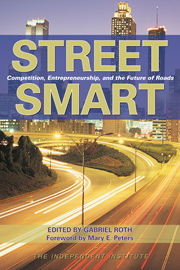MICHAEL BLOOMBERG deserves some credit for proposing that New York follow the example of London and other cities and apply congestion pricing to vehicles entering Manhattan below 86th Street weekdays from 6 a.m. to 6 p.m.
After all, congestion pricing—a road-use charge levied on certain roads at specific times of the day, presumably those with the most serious congestion when traffic is heaviest—makes sense. Indeed, it’s similar to the peak-period charges paid for electricity and telephone services or the increased charges levied by hotels in high season.
From experience in other cities, we know that congestion pricing can speed traffic, discourage nonessential trips in peak periods, encourage car-pooling, speed up buses and taxis, and attract to the city’s roads busy people prepared to spend money to save time.
If the fee for entering the congestion pricing zone is what economists describe as “efficient,” drivers coming into the city from Long Island, Westchester County and the Connecticut and New Jersey suburbs could reasonably expect reductions in travel times of up to 25 percent. This is because an efficient charge, while attractive to those who consider the time saved worth the money, would be a disincentive to others: enough to reduce overall traffic by 15 percent to 20 percent during peak times. This was London’s and Stockholm’s experience.
But the mayor’s proposed $8 charge for cars ($21 for commercial trucks) is too low to make a serious dent in New York traffic. According to the mayor’s own transportation report, the proposed charges would reduce traffic volumes in the charged zone by 6.3 percent, and increase traffic speeds by 7.2 percent. Such changes would hardly be noticeable, especially to commuters from outside the zone.
In fact, the mayor’s plan to cordon off a large swath of Manhattan and charge everyone entering that area the same fee looks more like a commuter tax than congestion pricing. This impression is strengthened by the fact that those who travel only within the zone—presumably those living in Midtown and Lower Manhattan—would be charged half the price.
It is true that London’s charge of about $16 is applied across the board for all vehicles; those driving into the priced zone for 10 minutes pay as much as those, like delivery vehicles, that may be in the zone for 10 hours. But this defect was accepted because London’s congestion charge had to be hurriedly introduced to meet a political timetable. New York is under no such pressure and can do better, perhaps emulating Stockholm, where different prices are charged at different times of the day.
Mayor Bloomberg promises that all revenue will be dedicated to environmental and mass transportation investments. Since road users would be paying the charges, it is fair to ask why net revenue will not be dedicated to highway improvements, as in Stockholm. For example, couldn’t lanes be added to the Long Island Expressway in Queens or a new tunnel opened under Manhattan to connect the expressway to the New Jersey Turnpike?
The theory that you cannot build your way out of congestion is valid only when road space is provided without the imposition of charges to limit traffic. Once efficient charges are introduced, and surplus revenue earned, it does not seem right to deny road users the better roads they are prepared to pay for.
While the mayor’s courage in even discussing congestion pricing is admirable, it is not clear whether the proposal is about allowing the price mechanism and consumer choice to reduce congestion and expand the road system, or whether it is about taxing road users, including commuters who are not residents (or taxpayers) of New York City, for the benefit of those who use or provide the city’s mass transit system.
If Mayor Bloomberg is really serious about his proposal, he needs to explain where road pricing will help reduce the amount of time commuters waste each day in traffic; assure those for whom the proposed charges would create hardship that alternatives will exist; develop a more sophisticated pricing system that recognizes that traffic patterns vary by place and time, and identify highway facilities that could be improved when payments by users exceed costs.
Above all, he needs to assure those who work in Manhattan but live elsewhere that the payments they make under the plan, which will do little to speed their commutes, will be used to improve New York City streets, intersections, bridges, tunnels, facilities for commercial vehicles and traffic control, not to support other projects that provide them little benefit, however worthy those projects may be to others.








